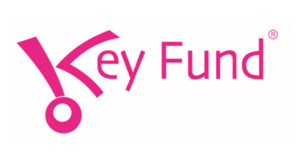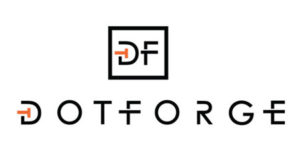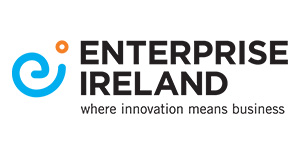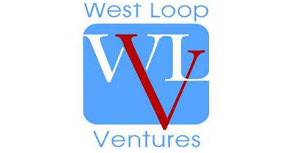Since the early 2000s, the pursuit of widespread (indeed Global) Financial Inclusion has become a cornerstone in the development of policies, products and services across the financial sector at a national, regional and international level.
In 2013, the World Bank first put forward a global financial inclusion vision and formally adopted an ambitious agenda in 2015 with the UFA2020 Initiative (to achieve Universal Financial Access by 2020). Clearly, that target hasn’t been achieved and was something of an over-reach, but progress has and is being made, and the fundamental principles and moral and ethical values that determine UFA2020 are now broadly accepted – if not implemented - across the payments and financial services sectors.
But achieving Financial Access doesn’t in itself mean that full Financial Inclusion will follow.
Defined by the United Nations in terms of a number of sustainable goals, the global financial inclusion agenda was born of a recognition that financial exclusion directly correlated to poverty and, in turn, to a lack of social and economic empowerment and development for low-to-middle income individuals, families and countries.
The effectiveness of the adopted agenda for financial inclusion is measured against posited outcomes of enfranchisement and empowerment from the application of four underlying goals:
- Access at a reasonable cost for all households to a full range of financial services, including savings or deposit services, payment, and transfer services, credit and insurance.
- Sound and safe institutions governed by clear regulation and industry performance standards.
- Financial and institutional sustainability, to ensure continuity and certainty of investment.
- Competition to ensure choice and affordability for clients.
This drive towards global financial inclusion is seen by the World Bank as a catalyst and enabler for its perhaps naïve but earnest goals of ending extreme poverty by 2030 and boosting shared prosperity for the bottom 40 percent of the population in all developing countries.
At first sight, these principles and their adoption would appear to be the panacea: textbook solutions perfectly expressing the required steps to achieve financial access and inclusion for all. And no doubt they would be in an ideal world and if all parties involved, from end-users to authorities to providers, applied and adhered to them.
But the kicker is, just having access to financial services doesn’t mean people are going to be able (or willing) to avail of them, or that they will always have the desired beneficial outcomes. Savings depend on having a disposable excess of income to save; credit or loans again depend on your level of earnings and ability to repay, the consequences of non-payment being potentially disastrous; sound and safe institutions, clear regulation and industry standards is a somewhat tenuous or nebulous objective – financial institutions collapse, governments change and along with them applied policies and laws all of which may positively or adversely affect social and economic development, sustainability and stability. Choice and affordability through competition is a fundamental economic principle but can lead to monopolies and even oligopolies – and in achieving goals that require multi-party collaboration co-operation is always better than competition.
All that said, and probably no surprises here, results from meta-studies carried out by the highly respected Campbell Collaboration (Impact of financial inclusion in low- and middle-income countries: A systematic review of reviews) found that ‘... the effectiveness of financial inclusion programs to improve economic, social, behavioral and gender-related outcomes in low- and middle-income countries have been mixed.’
There are some success stories – target 1.A of the Millenium Development Goals (which preceded UFA2020) to halve, between 1990 and 2015, the proportion of people whose income is less than $1.25 a day was achieved.
For the record the current level of income below which is defined as extreme poverty is $1.90 a day – think about that the next time you’re buying a coffee.
‘Programs geared toward savings opportunities have had small but more consistently positive effects, and fewer risks, than credit-oriented programs.’ But, broadly, ‘...programs to improve access to financial services often have small or inconsistent effects on income, health, and other social outcomes.’ And where there has been a global increase in bank account ownership amongst the low- and middle-income demographic, there has also been an increase in the number of dormant bank accounts in the same demographic. In short, accounts are being opened by the desired target population, but are not being fully utilized.
There is a clear conclusion to be drawn. Financial Inclusion is not achieved simply by providing access to a range of financial services delivered through technology, or by establishing clear regulatory regimes and industry standards, pursuing financial and institutional sustainability, or by encouraging a competitive marketplace.
While all these laudable endeavours have a part to play, Universal Financial Inclusion will only be achieved and the measures to address financial access be meaningful if the elephant in the room is addressed. And that elephant is...Poverty. But that global, age-old injustice isn’t likely to be eradicated any time soon.
So, what’s to be done?
Well, carry on pushing for and innovating in financial access and services. Carry on pursuing the financial inclusion agenda. And that means more collaboration between agencies, businesses, governments, and NGOs. Continue to build bridges, not burn them...
Which brings us on to a bridge that appears to have been scheduled for demolition for a long time now but whose disappearance would be akin to the destruction of Ponte Vecchio, or The Golden Gate Bridge, Tower Bridge...pick your favourite bridge.
It’s CASH.
In some quarters it seems that financial inclusion has become synonymous with the agenda for a cashless society. Indeed, there are commentators who present cash as a barrier to financial inclusion, even an enemy of financial inclusion.
However, through the lens of the UFA2020 defined Sustainable Development Goals for universal financial access and inclusion, the notion of the cashless society would appear to be at odds with or, indeed, irrelevant to that ambition.
And, given recent events, it is clear that removing cash from society and the economy would have the result of extending financial exclusion.
Demonetization or Demonisation?
Take, for example, India’s 2016 experiment with demonetization of the most widely used banknotes (500INR and 1000INR roughly 86% of currency in circulation) which led to social and economic chaos – stock markets plummeted, industrial output declined, jobs were lost – with a significant proportion of the population becoming, effectively, financially excluded. And since that experiment, which was designed to counter black market activity (99.3% of demonetized notes were legitimately exchanged for the new notes), increase tax returns (tax take growth was broadly in line with previous years), push the use of digital transactions (digital transactions have increased and e-wallet ownership has increased), cash has maintained its position as India’s favoured method of payment.
There’s the rather cynical – perhaps sinister - action of the banks closing free-to-use ATMs across the UK. The fact that the highest number of closures are taking place in lower-income areas is cause for concern. How does that help financial access? You might think that banks and the government in the UK are just paying lip service to UFA2020. You might also think that it’s a move designed to ‘nudge’ people to digital payments. Looks more like a shove.
And, of course, there’s the ever-present spectre of crashing and hacked digital payment systems. It’s happened before and will continue to happen. Fortunately, cash doesn’t crash or get hacked.
So, it appears that cash actually supports financial inclusion. The transition to digital financial access and inclusion is, of course, desirable and there are many benefits to be gained from that transition. Isn’t it clear that globally cash is the ubiquitous facilitator of financial access and inclusion?
Pipit Global's partnership with Finastra FusionFabric Cloud brings together banks and millions of cash customers to extend financial access and financial inclusion around the world.






